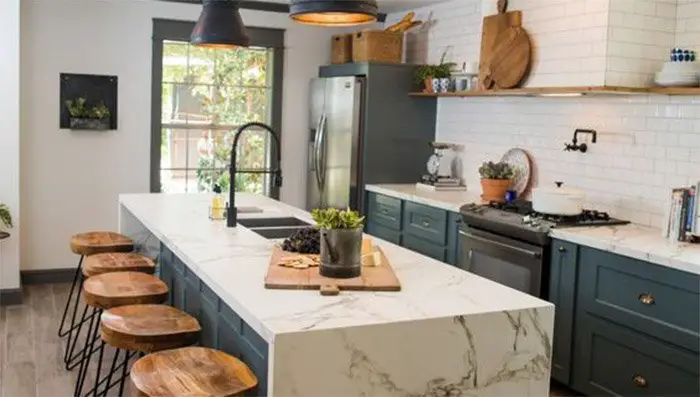
There’s little doubt we’ve all spent a great deal more time at home over the last 15 months!
Lockdowns, travel restrictions and remote working have driven millions of people to exist primarily in their own little haven for well over a year now.
The knock-on impact? A massive surge in home improvements, with the Home Improvement Research Institute reporting that:
- COVID-19 restrictions drove 86% of home improvement projects in March 2020.
- The pandemic was still influencing 57% of new projects in February 2021.
It shouldn’t really be a surprise – if you spend 90% of your time in one space, it becomes so much more meaningful that you feel relaxed, comfortable and secure there!
While the popularity of working on our residences may have begun to steady, the trend isn’t going anywhere.
Here, the A Wilson Roofing in Surrey look at the driving factors and how the home improvement market is set to change in the months ahead.
Why Has Home Improvement Become a Pandemic Priority?
We’ve touched on the need to focus on living standards at home, necessitated during the pandemic – but it’s a little more nuanced!
The stats are clear:
- Sales of gardening items have risen 48.2% year on year.
- Paint purchases have increased by 47.1%.
- 31.4% more people have bought building materials.
- Tools and equipment sales have risen 14.7%.
It’s also not just interiors that have become more valued. Whereas the summer before, many families would have spent their days at the park or beach, they are now making more use of those precious outdoor spaces.
There are a few contributing elements behind this dramatic increase in the appetite of UK consumers.
- Availability
While hospitality and non-essential retail stores were closed for most of the year, many DIY retailers were permitted to re-open, with safety measures in place, pretty early on.
With time on their hands, homeowners could start those long-overdue DIY projects with access to click and collect services many months before other outlets were legally allowed to trade.
- Accessibility
Although many people found themselves on furlough and experiencing a 20% pay cut, millions were forced to cut back on general spending.
Cancelled holidays, the lack of days out, no social events and postponed celebrations bolstered the average amount of cash savings.
That has made home improvements one of the few activities available and something more financially accessible.
- Security
Not least, it’s essential to appreciate how fundamentally our foundations of security have been rocked.
Such a sudden and frightening change to everyday life has caused many households to revisit their priorities – and having a safe home is now of far greater importance.
Investing in a new roof, getting started on that extension, or giving a tired garden a little TLC now means, somehow, more!
It’s tangible, long-term, and makes a direct impact on our quality of life.
When we think about all of these elements, it’s clear to see that the increase in home improvement isn’t solely about making our homes better places to live.
It’s a unique time when so many families have identified projects that have proven to be a creative outlet and a worthwhile investment to redirect some of that everyday spending curtailed by the pandemic.
What is the Post-Pandemic Outlet for the Home Improvement Sector?
Perhaps we’d assume there will be a corresponding slump in home improvement projects post-pandemic, but the reality is, it’s likely to be the opposite!
- Stamp duty holidays, low-interest rates and a rebound in the UK property market have driven massive investment rates – meaning more renovations, more conversions, and more rental property improvements.
- DIY disasters happen to the best of us, so we’re experiencing strong demand where repairs are required to shore up any well-intentioned jobs that would have been best left to the professionals!
- Hundreds of thousands of city-dwellers have relocated to rural regions, put off by the claustrophobia of lockdown in the city. That also means more extensions, projects to bring dated homes up to standard, and an all-around change in expectations for quality finishes.
Make no mistake; the impact of the pandemic is much more than a short-term blip in the home improvement sector.
It has driven a greater appreciation of the little things in life.
Whether that’s a beautiful modern kitchen, a spacious sunroom, or a brand new roof that will stand your property in good stead for the years to come – tradespeople are booked up for months on end, with no signs of a slowdown on the horizon just yet.
References:
- https://www.insightssuccess.com/how-has-corona-affected-the-home-improvement-industry/
- https://nhic.org.uk/covid-19-uk-home-improvement-industry-impact-report/
- https://www.hiri.org/index.php?option=com_dailyplanetblog&view=entry&category=projects&id=87:covid-19-impact-tracker-february-2021-takeaways-for-home-improvement
- https://www.statista.com/statistics/1107061/diy-online-sales-growth-during-coronavirus-in-the-uk/
- https://www.thedrum.com/opinion/2020/04/17/what-the-impact-covid-19-the-diy-industry
- https://www.businesswire.com/news/home/20200723005099/en/Home-Improvement-Activity-Increases-During-COVID-19
- https://www.bheta.co.uk/news/covid19-news/global-overview-the-impact-of-covid-19-on-the-home-improvement-industry/


